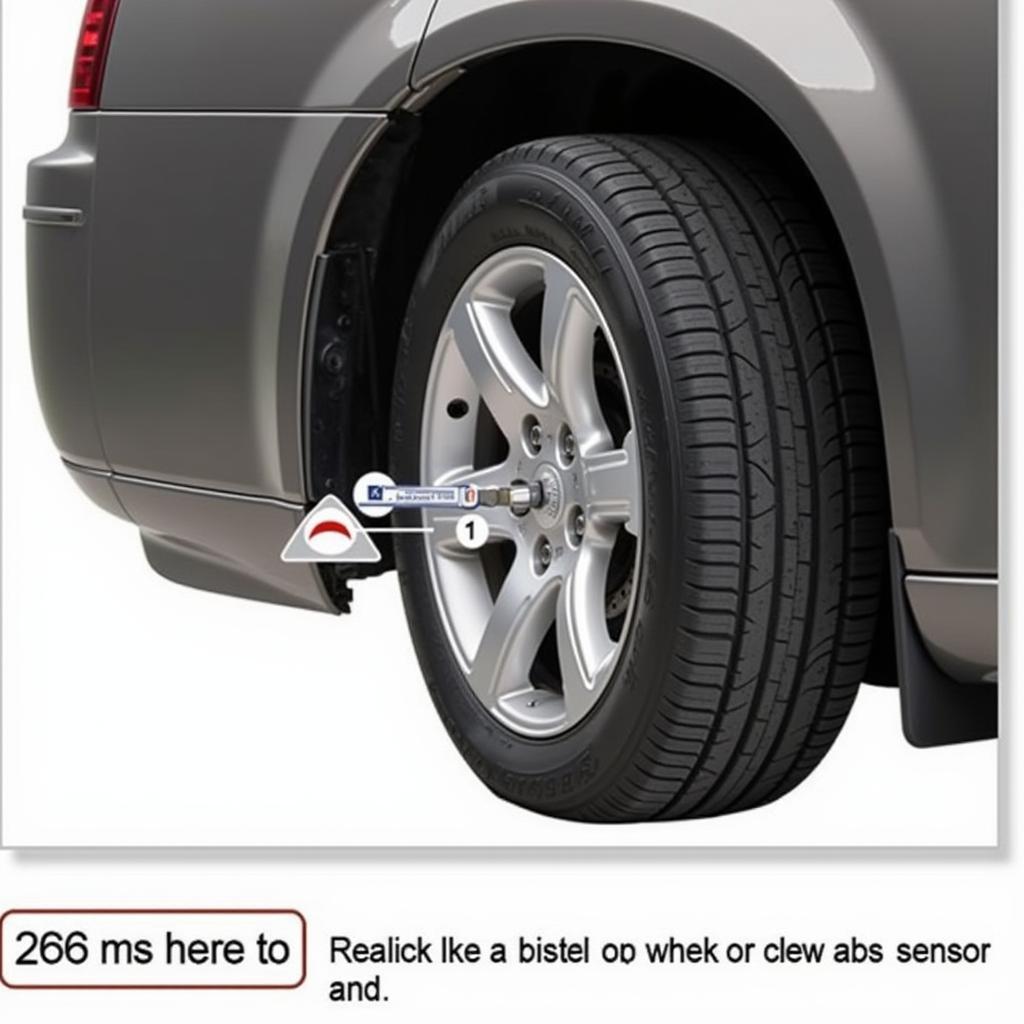The vehicle brake system warning light is a crucial indicator of your car’s safety and should never be ignored. This light can signal anything from a simple issue like low brake fluid to more serious problems like a malfunctioning anti-lock brake system (ABS). Understanding what triggers this warning light and how to address it can save you from costly repairs and potentially dangerous driving situations. After reading this, you may be interested in reading about the brake pedal warning light.
Common Causes of the Brake Warning Light
Several factors can illuminate the vehicle brake system warning light. One of the most common is low brake fluid. Brake fluid is essential for transferring pressure from the brake pedal to the brakes themselves. Over time, brake fluid levels can decrease due to leaks or wear and tear. Another culprit could be worn brake pads. As brake pads wear down, they can trigger a sensor that activates the warning light. A malfunctioning ABS can also illuminate the warning light. This system is designed to prevent wheel lockup during braking and requires sensors and a control module to function properly. Lastly, a faulty parking brake switch can also trigger the light.
Diagnosing the Problem
Identifying the specific cause of the illuminated brake warning light requires a systematic approach. Begin by checking the brake fluid level. If it’s low, adding more fluid might resolve the issue. However, consistently low brake fluid suggests a leak that needs professional attention. Next, inspect the brake pads for wear. If they appear thin or worn, replacement is necessary. If the brake fluid and pads seem fine, the problem may lie within the ABS or the parking brake switch. Diagnosing these issues often requires specialized diagnostic tools and expertise.
What to Do When the Brake Warning Light Comes On
When the brake warning light illuminates, your first step should be to safely pull over and assess the situation. Check your brake pedal feel. Does it feel spongy or unusually low? If so, avoid driving and seek immediate assistance. If the pedal feels firm, carefully proceed to a safe location and inspect the brake fluid and parking brake. If you are comfortable doing so, you can check the brake pads as well. Remember, if you are unsure about anything, consult a qualified mechanic. If you suspect your ABS is malfunctioning, avoid hard braking as much as possible until the issue is resolved. This may be helpful if you are experiencing a volvo c30 brake failure warning.
Remote Diagnostics and Programming Solutions
In today’s technologically advanced world, remote diagnostics and programming offer convenient and efficient solutions for certain vehicle issues. These services allow qualified technicians to access your vehicle’s computer system remotely, diagnose problems, and even install software updates to address specific malfunctions. This can be particularly helpful for addressing software-related issues within the brake system, such as ABS control module errors. While remote services cannot physically repair components like brake pads or fix leaks, they can be valuable tools for diagnosing and resolving software-related problems quickly and effectively.
“Remote diagnostics allowed me to pinpoint a software glitch in the ABS system without the customer having to bring their car to the shop. A quick software update resolved the issue, saving the customer time and money,” says John Davis, Senior Automotive Diagnostic Technician at ABC Auto Repair.
Preventing Brake System Issues
Regular maintenance is key to preventing brake system problems. Follow the manufacturer’s recommended maintenance schedule for brake fluid flushes, brake pad replacements, and inspections. This proactive approach can help identify potential problems early on, preventing more extensive and costly repairs down the road. Also, be mindful of your driving habits. Avoid aggressive braking and riding the brakes, as these habits contribute to premature wear and tear. For example, if you have a 1997 ford aero star brake warning light, having it checked regularly is important.
Conclusion
The vehicle brake system warning light is a vital safety indicator. Understanding its potential causes and taking appropriate action can ensure your safety on the road. From checking your brake fluid to utilizing remote diagnostic services, staying proactive can prevent costly repairs and maintain the optimal performance of your vehicle’s braking system. Ignoring this warning light can lead to dangerous driving conditions, so always address it promptly. Don’t forget that the warning lights might appear together like in the case of a charge warning light and brake light on car wont start. You can also check out issues related to a chevy suburban trailer brake system warning.
FAQ
-
What does the vehicle brake system warning light look like? It typically resembles an exclamation point inside a circle or parentheses, and it may be accompanied by the word “BRAKE.”
-
Is it safe to drive with the brake warning light on? It depends on the underlying cause. If the pedal feels spongy, it’s unsafe to drive. If the pedal feels firm, proceed cautiously to a safe location and seek assistance.
-
How often should I check my brake fluid? Check your owner’s manual for the recommended interval, typically every few months or with each oil change.
-
Can I top off my brake fluid myself? Yes, if you know how to locate the reservoir and identify the correct type of brake fluid.
-
How long do brake pads typically last? Brake pad lifespan varies depending on driving habits and conditions but typically ranges from 30,000 to 70,000 miles.
-
What is remote diagnostics? It allows technicians to access your car’s computer remotely to diagnose and sometimes fix problems.
-
How much does a brake system repair typically cost? The cost varies greatly depending on the specific problem and the make and model of your vehicle.

